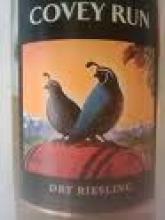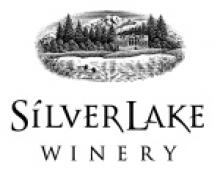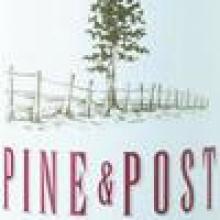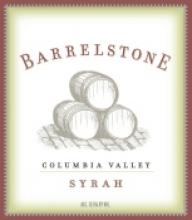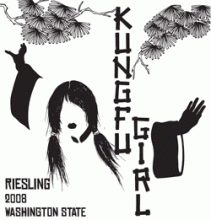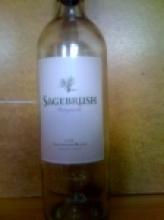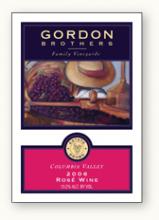2007 Covey Run Dry Riesling Columbia Valley
I will confess to trying the Covey Run Riesling from their "Quail" tier a year ago. It was fine, really, just not enough to make
me try another bottle, or, frankly, interest me in trying any of their other wines, though they're readily available all over the Pacific Northwest, and very much budget or consumer table wines. At the time, their Riesling struck me as watery and much too sweet. We picked this bottle of Covey Run Dry Riesling up on a whim at a local grocery store, in part because I remembered seeing that Wine Spectator listed Covey Run's 2007 "Quail" series Dry Riesling as one of their 20 "best values" award wines (most of their awards have been for their Reserve tier wines).This wine was a pleasant surprise, and if you like dry wines, or especially, dry Riesling, I suggest you pick up a bottle or three. It's rather lovely. The wine is an attractive golden straw color. It's definitely dry, but complex and quite marvelous—and still very recognizably Riesling. It's citrusy and just acidic enough, but not without the sweetness you'd expect of even a dry Riesling, and it's a mere 12% ABV, unlike some ostensibly "dry" Rieslings I've seen.
Covey Run is a Washington state winery in the eastern half of the state, with vineyards in Yakima and in the Columbia valley. They note, with understandable pride, that they've been awarded 20 "Best Value" awards by Wine Spectator. Covey Run is one of the older Washington state wineries, with 25 years of history. I'm intrigued that their winemaker Kate Michaud worked in the cellar at Bonny Doon Vineyards in Santa Cruz, California, went to school at the University of California at Davis, and then in worked for another winery in Australia, followed by time at Canoe Ridge Vineyard in Walla Walla. That's got to have given her all sorts of interesting exposure to a variety of styles, and techniques. I'm going to have to try a few other Covey Run wines—and watch for their Reserve wines. I note that Wine Spectator has reviewed and rated Covey Run's Riesling Columbia Valley Late Harvest Reserve 2007 at 88 points. They describe it as "Lightly sweet, with a hint of apricot to the pear and citrus flavors. Finishes sweet but balanced." Not surprisingly, they suggest "drink it now." I'm perfectly willing to do that; in fact, I plan on trying it as soon as soon as possible, in order to "drink it now."
